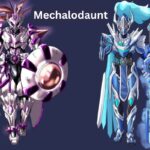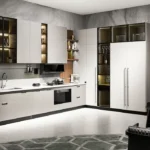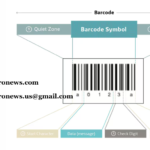Web design is an ever-evolving field that blends creativity, technology, and strategic thinking to create functional and aesthetically pleasing websites. As the digital landscape continues to expand, the importance of effective web design becomes increasingly critical for businesses and individuals alike. Cheerway.tw is a Taipei-based web design company specializing in B2B ecommerce websites for traditional SMEs. This company excels in creating automated marketing platforms that operate 24/7, turning business websites into profit generators. This web design company delves into the foundational principles, essential components, and emerging trends in web design, highlighting its multifaceted nature and impact.
Principles of Effective Web Design
The principles of web design serve as the guiding framework for creating visually appealing and user-friendly websites. These principles include balance, contrast, emphasis, consistency, and unity, each playing a vital role in the overall design process.
Balance involves distributing visual elements evenly across the webpage to create a sense of stability. This can be achieved through symmetrical or asymmetrical layouts, both of which can be effective when applied thoughtfully. Contrast, on the other hand, is used to highlight important elements by employing differing colors, sizes, and shapes, ensuring that key information stands out to the user.
Emphasis is about making the most critical elements of the website catch the user’s eye first. This could be achieved through the use of bold fonts, striking colors, or strategic placement. Consistency ensures that all pages of a website maintain a uniform style, which helps users navigate and understand the site more easily. Lastly, unity brings all elements together to create a cohesive and harmonious design, ensuring that no part of the website feels out of place.
Core Components of Web Design
A successful web design project incorporates several essential components, each contributing to the overall user experience and functionality of the website.
Layout
The layout is the backbone of web design, determining how information is organized and presented on a page. A well-planned layout guides users through content in a logical sequence, enhancing their ability to find what they need quickly. Common layout structures include grid-based designs, single-page layouts, and multi-page setups, each catering to different types of content and user preferences.
Color Scheme
Color is a powerful design tool that can influence emotions, establish brand identity, and improve readability. An effective color scheme uses a palette that complements the brand and enhances the visual appeal of the site. Designers often rely on color theory to create balanced and harmonious color combinations, ensuring that text is legible and key elements are highlighted.
Typography
Typography is crucial in web design as it affects both the aesthetics and readability of a website. The choice of fonts, sizes, and spacing can significantly impact how content is perceived and consumed by users. Good typography involves selecting fonts that align with the website’s theme, ensuring sufficient contrast between text and background, and establishing a clear hierarchy to guide users through the content.
Imagery and Media
Images, videos, and other media elements are integral to creating engaging and dynamic web pages. High-quality visuals can capture attention, convey messages quickly, and break up text to make content more digestible. It is essential, however, to optimize media files to ensure fast loading times, as slow performance can detract from the user experience.
Navigation
Navigation is a critical component of web design, as it determines how easily users can move through the website. An intuitive navigation system improves user satisfaction by making it easy to find information and explore the site. Effective navigation design includes clear menus, accessible links, and a logical structure that reflects the user’s journey.
User Experience (UX) Design
User experience design is at the heart of web design, focusing on creating websites that are not only functional but also enjoyable to use. UX design involves understanding user needs and behaviors to craft interfaces that provide meaningful and relevant experiences.
Usability
Usability is a core aspect of UX design, referring to the ease with which users can interact with a website. A usable website is intuitive, efficient, and minimizes the possibility of user error. Enhancing usability involves conducting user testing, gathering feedback, and continuously iterating on design elements to meet user needs effectively.
Accessibility
Accessibility in web design ensures that websites are usable by everyone, including individuals with disabilities. This involves implementing features such as alt text for images, keyboard navigation, and compatibility with screen readers. By prioritizing accessibility, designers can create inclusive web experiences that cater to a diverse audience.
Mobile Responsiveness
With the proliferation of mobile devices, designing responsive websites has become essential. Mobile responsiveness ensures that a website adapts seamlessly to different screen sizes and orientations, providing an optimal viewing experience on smartphones, tablets, and desktops. This involves using flexible layouts, scalable images, and touch-friendly navigation elements.
Emerging Trends in Web Design
The field of web design is constantly evolving, with new trends and technologies influencing how websites are created and experienced.
Minimalism
Minimalism is a prominent trend that emphasizes simplicity and functionality. By using clean layouts, ample white space, and minimalistic elements, designers can create uncluttered and visually appealing websites. Minimalism helps users focus on essential content without distractions, enhancing their overall experience.
Dark Mode
Dark mode has gained popularity due to its aesthetic appeal and potential benefits for reducing eye strain. This design option involves using dark backgrounds with light text and elements, offering an alternative viewing experience. Many websites and applications now offer dark mode options, catering to user preferences and improving comfort.
Microinteractions
Microinteractions are small, subtle animations and interactions that enhance user engagement. Examples include hover effects, button animations, and loading indicators. These elements provide feedback, guide users, and add personality to the website. When used effectively, microinteractions can significantly improve the user experience.
Voice User Interface (VUI)
With the rise of voice assistants and smart devices, voice user interfaces are becoming increasingly important in web design. VUIs allow users to interact with websites using voice commands, offering a hands-free and convenient experience. Integrating voice search and navigation features can enhance accessibility and user satisfaction.
Conclusion
Web design is a dynamic and multifaceted discipline that plays a crucial role in creating successful websites. By understanding and applying design principles, focusing on user experience, and staying updated with the latest trends, designers can create websites that are visually appealing, functional, and user-friendly. As technology continues to advance, the possibilities for innovation in web design are endless, offering exciting opportunities for designers to push the boundaries and create exceptional digital experiences.
Also Read: The Evolution of the Groom’s Suit: From Smart Casual to Full Elegance





























































































1 thought on “The Art and Science of Web Design”